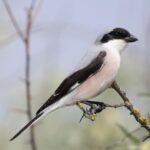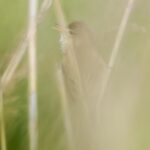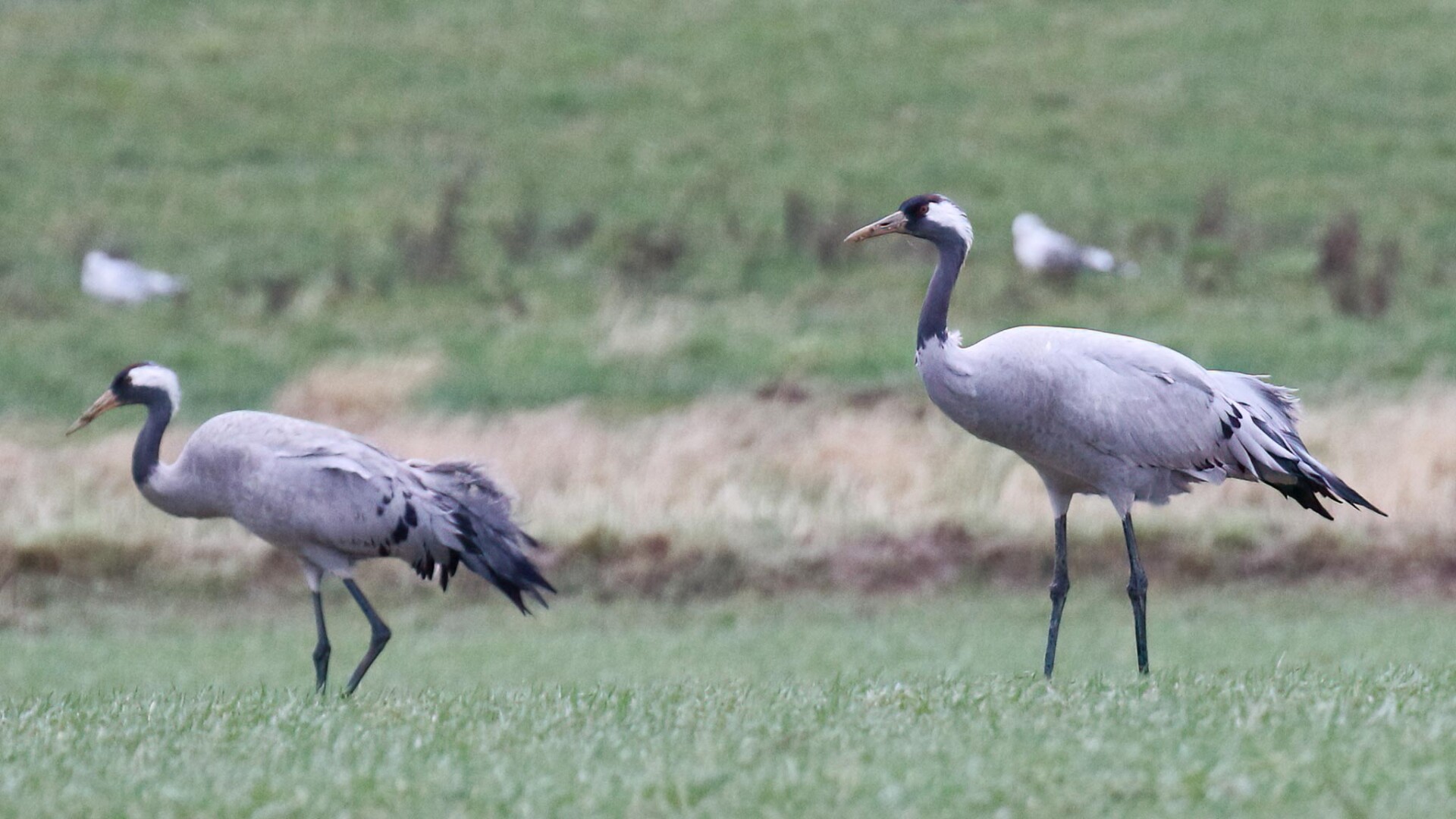Day 2 of a three day tour in the Brecks and North Norfolk today. It was a rather grey and cloudy start, but blue sky started to appear through the morning and the afternoon remained dry and bright, although it was rather windy all day with a nagging chilly southerly.
We headed down into the Brecks again this morning, and made our way deeper into the Forest, parking by one of the rides. As we walked in through the dense plantations of pines, a Yellowhammer was calling from the top of a tree in the first clearing and a Kestrel flew up from the ground trailing long strands of grass from its talons, presumably bycatch from whatever it had grabbed down there.
Cutting across on a smaller track, a couple of Goldcrests were singing in the fir trees, either side of us. We could hear loads of finches chattering in the tree tops – mainly Siskins here, but looking up we could see a few Chaffinches and Bramblings too. A Chiffchaff was singing in the pines a bit further up.
We carried on to the clearing at the end. Another Yellowhammer was singing from the top of a young pines and a pair of Stonechats were flicking up and down from the deer fence. A couple of Linnets flew off and a pair of Meadow Pipits dropped down into the short grass on the edge of the track.
A Skylark flew in over the clearing in front – its long tail with white outer edges and an obvious white trailing edge to wing – landing behind us. A couple of minutes later, a Woodlark flew up from the clearing where the Skylark had gone down. It called once but wasn’t really singing as it fluttered up, or at least if it was we couldn’t hear it in the breeze, but we watched as it drifted off over pines. Then the Skylark came up singing in the same area, the song much less melancholy than the Woodlark’s.
A Goshawk appeared over the trees at the back of the clearing, a big female. It was an adult – silvery grey above and white below, and it started displaying over the line of pines, white undertail coverts puffed out, flying with exaggerated deep wing beats across to the far end where it dropped down out of view. A little while later it came up again, displaying non-stop now, up and down over the pines. While we were watching the female up in the sky, two more Goshawks chased through the tops of the trees below – presumably the resident male chasing off an intruder, which would explain why the female was displaying so much.
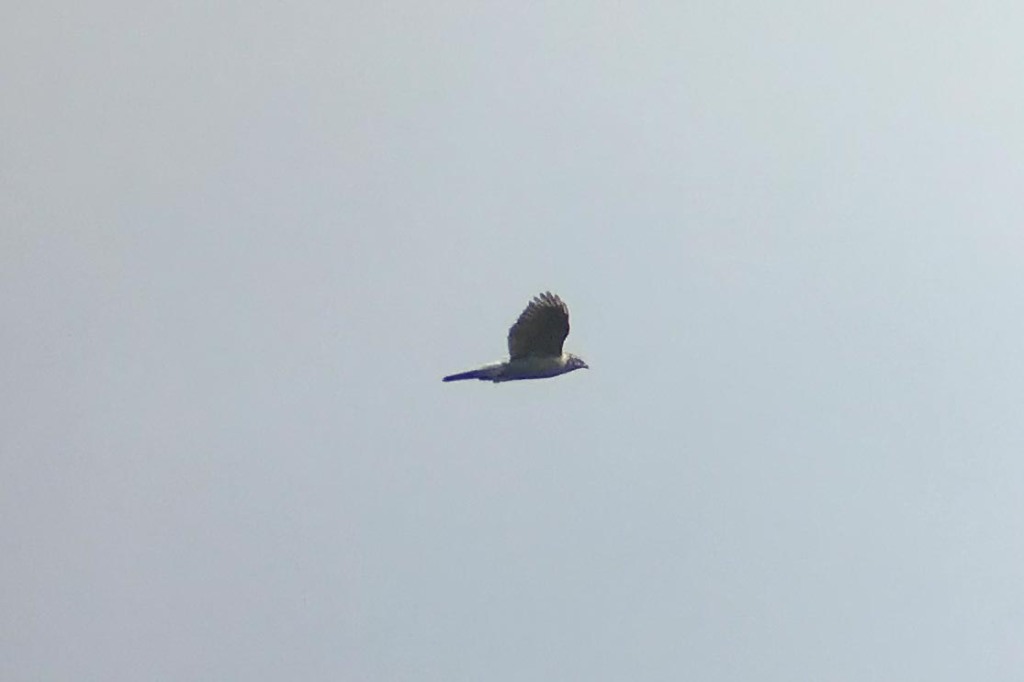
There were lots of finches on the path around the edge of the clearing now, feeding on all the seed which was spiralling down out of the pines. As we had seen yesterday, there is a real food bonanza at this time of the year as the cones open. As we walked down the track, the hundreds of Chaffinches came up from under the pines. We could see a few Bramblings in with them too.
We had met someone we knew earlier, who told us that a few Crossbills had been coming down to some puddles on the next ride over in the last couple of days, so we decided to walk back that way. There were even more finches on the ride as we walked down towards puddles, Chaffinches and Bramblings, and lots of Siskins calling in the pines. The person we had spoken to earlier had walked down before us, but told us there was no sign of any Crossbills coming down to the puddles now. We waited for a bit scanning. Two more Goshawks drifted high over the ride – a male and a juvenile female – but were quickly lost to view over the trees.
There had been a report of the first Stone Curlews back yesterday at Cavenham, so we decided to head over there for lunch. We parked on the edge of the heath and got out to scan while we ate. The wind had picked up and it was rather breezy here now. We couldn’t see any Stone Curlews – presumably they would be sheltering somewhere out of the wind, but the wind was at our backs, so they would be out of view.
A Woodlark was singing somewhere behind us and a Green Woodpecker was yaffling from deep in the trees. A pair of Stonechats flitted across the heath. A large herd of Red Deer appeared through the trees at the back, stopped at the fence, then decided against coming out into the open and turned back. We watched them all jumping the fence behind.
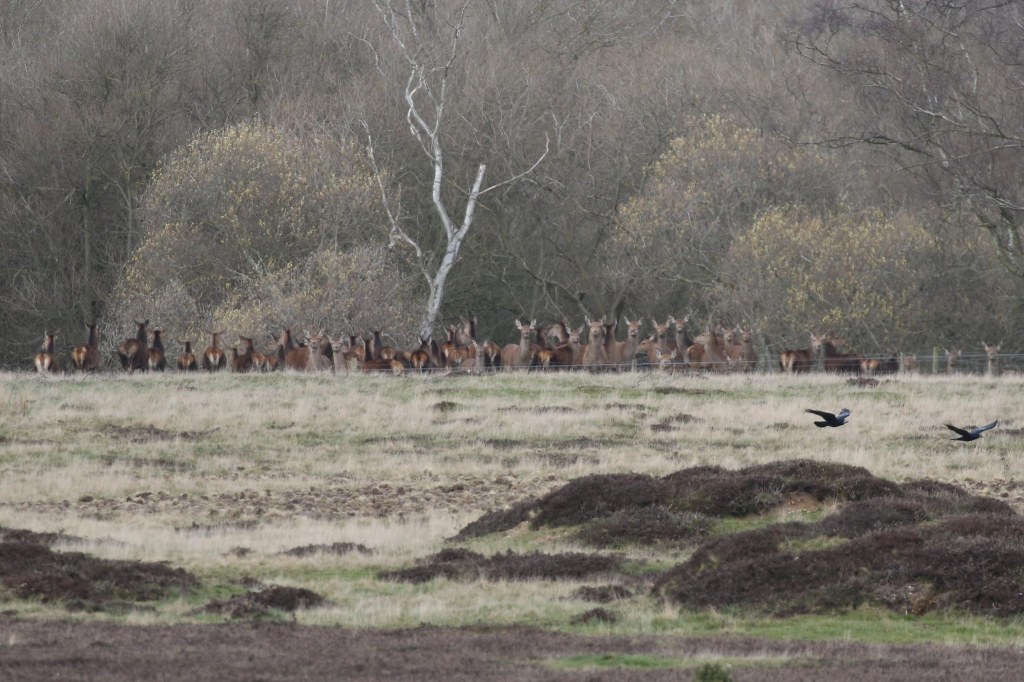
We walked on down to the river. A pair of Egyptian Geese were on the floods and as we got closer we found lots of Canada Geese and Greylags out on the grass too. A small group of Teal were feeding in the water. There were lots of Lapwing around the pools and a lone Redshank. From down by the river, we picked up two Eurasian Curlew right at the back – not the sort of ‘curlew’ we were hoping for!
There was still no sign of any Stone Curlew as we walked back. It was hard going out on the heath in the nagging wind and as we wad to head back north anyway, we decided to spend the rest of the afternoon up on the coast and try to add some more variety to the birds.
We were hoping to catch up with the Red-breasted Goose at Cley this afternoon, but it hadn’t been reported since this morning and there was no sign of it now where it had been earlier. There was just a small flock of Brent Geese in the Eye Field, which we scanned through. The Black Brant was in with them and appeared briefly on the front edge.
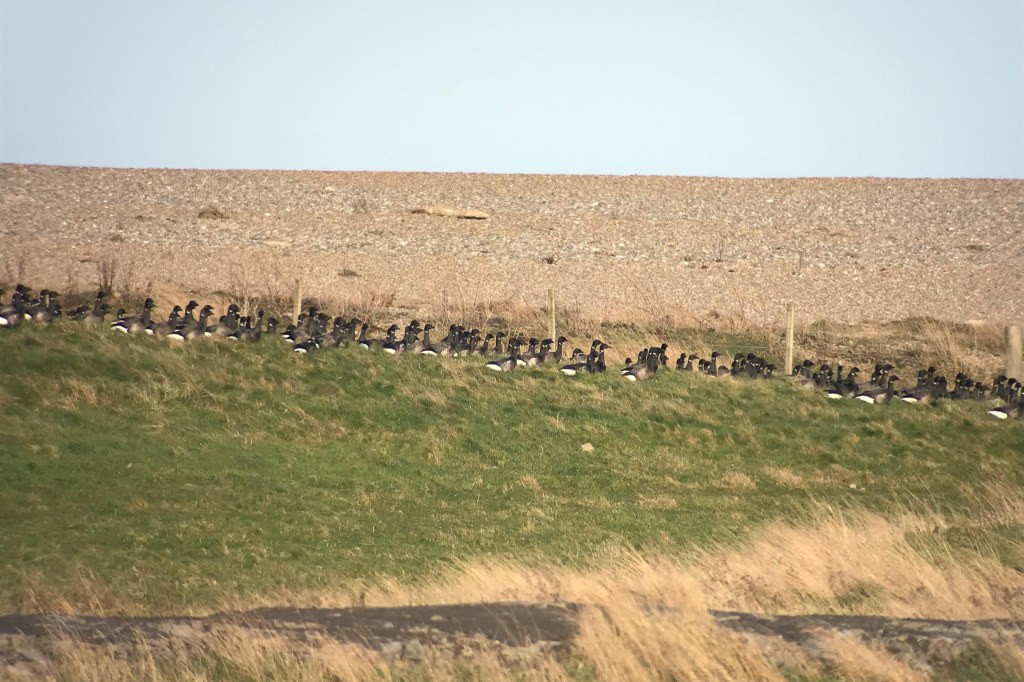
We stood for a while and scanned the marshes from up on the West Bank. There was a nice selection of other birds here. Two Pink-footed Geese were resting out on the grazing marsh – nice to catch up with some before they all leave us for the summer. There was a scattering of ducks on the shallow pools in the grass, including a smart drake Pintail upending and showing off its long central tail feathers.
A few Ruff were running around in the wet grass behind a group of feeding Wigeon. Further back, on the scrapes, we could see our first Avocets of the trip plus several Black-tailed Godwits. Our first Marsh Harriers were enjoying the wind over the reedbed. A pair of Brown Hares chased each other round through the grass below.
We had a quick drive along the main road to Salthouse, but there was no sign of any more Brent Geese there, so we figured they might be on Blakeney Freshes. We parked by the sluice and as we got out, a Cetti’s Warbler shouted from the reeds across the road. We had no time to walk all round now, but we thought we could have a quick look at the SE corner of the Freshes, where the Brents had been feeding in recent days.
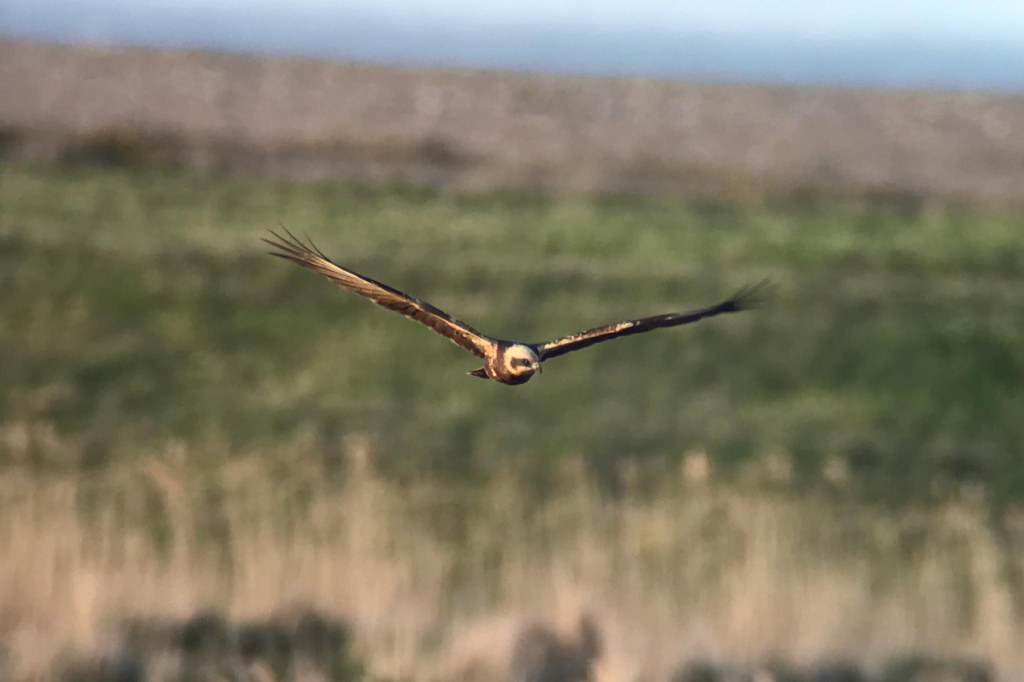
There was no sign of any geese here either, beyond a few Greylags, so they had probably gone off somewhere more sheltered. But there were several more Marsh Harriers hanging in the breeze, including a couple of males, one a lovely pale bird. The female kept landing on the hedge in front of us. A Great White Egret flew in and landed on the grass below us and a nearby Little Egret allowed us a good comparison as we moved the scope between them.
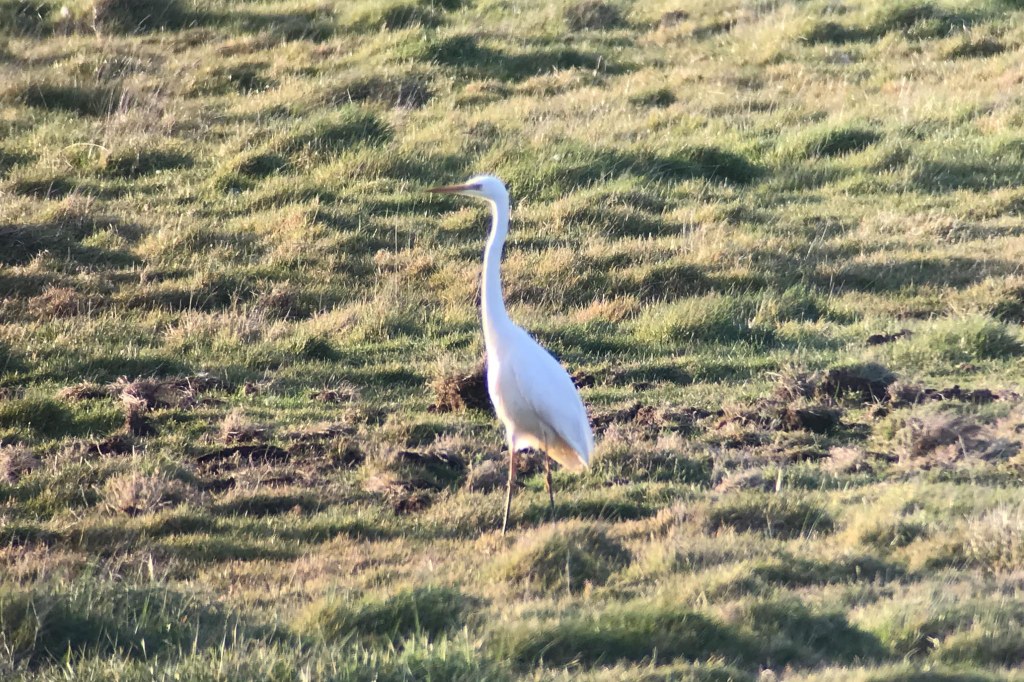
The light was starting to go so it was time to call it a day. We would have a lot more time up here on the coast tomorrow.
